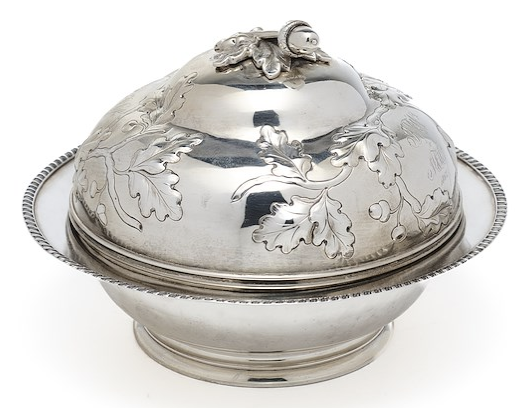 |
| Butter cooler, Vincent Laforme, Boston, c.1850 Collection of Gibson House Museum |
The maker of the dish was prominent Boston silversmith Vincent Laforme; the gothic “L” and eagle hallmarks stamped on the underside are his marks. Laforme was the son and brother of silversmiths. Born in Germany in 1823, he and his family moved to Boston in 1833 where his father trained him and his brothers in silversmithing. A decade later, Vincent set up his own shop at 5 Water Street where he worked with his brother Francis—their business name was Laforme and Brother. In 1854 the name was changed to F.J. Laforme & Co. after the brothers parted from the company, but three years later the business went out of operation. During Vincent’s time at the company, the Laformes would wholesale their products to larger companies including Lincoln & Foss. Vincent continued to work as a silversmith where he was cited as a good craftsman but a poor manager.











